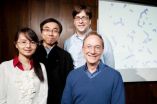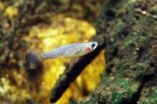(Press-News.org) (Garrison, NY) Extra large private hospital rooms with plenty of natural light and artwork may seem like unaffordable luxuries, but new research shows that these and other architecture and design features can improve patient care and in the long run reduce health care expenses. They are among the elements of the "Fable hospital," an ideal health care facility as conceived and analyzed by leaders in health care and design. Elements of the Fable hospital are being adopted on the ground today, with the imperative to improve quality and value.
A set of articles in the Hastings Center Report examines the state of the evidence for these design features, looks inside two hospitals that put some of these innovations into practice, and considers how design fits into the moral mission of health care.
"Fable Hospital 2.0: The Business Case for Building Better Health Care Facilities." The lead article gives a thorough analysis of research that shows that specific design innovations can yield enormous benefits, such as reducing health care-related infections in patients and occupational injuries to nurses, as well as cutting energy use. These benefits, in turn, reduce costs, leading to a return on investment within three years, write the authors, who are leaders in health care management and design. The lead author is Blair Sadler, a senior fellow at the Institute for Healthcare Improvement and past president and CEO of Rady Children's Hospital, San Diego. He is co-author of Transforming the Health Care Experience through the Arts and is a fellow and board member of The Hastings Center.
"Case Study: Dublin Methodist Hospital." Cheryl Herbert, president, supervised the construction of this new hospital in Ohio, which features all private rooms, abundant natural light, and noise-reducing materials. Among the positive outcomes were a low rate of health care-acquired infections and patient falls with injury. "We calculated that the evidence-based design elements we incorporated were 2.5 percent of the total project cost of $150 million," she writes. "Our results tell us it was worth it."
"Case Study: Sacred Heart Medical Center." The plan to incorporate evidence-based design features such as "soothing impressionistic art" and views of the natural landscape into Sacred Heart Medical Center in Oregon initially met resistance, writes Alan Yordy, president and chief mission officer of PeaceHealth, the parent organization. "A few community members were skeptical that this was anything more than a justification for building an expensive 'Hospital Hilton.'" But the new facility has demonstrated several benefits over the one it replaced, including reduced lengths of stay and costs of discharge.
"Values Engineering: The Ethics of Design in Community Health Centers." Federally funded community health centers, which serve the neediest patients, are incorporating evidence-based design to support the ethics of expanding access to health care, write Benjamin Boltin, a consultant specializing in the design, construction, and operation of federally qualified health centers, and Nancy Berlinger, a research scholar at The Hastings Center. Among the examples they cite is a mobile health van that brings health services to migrant workers in across northwestern New Jersey. The van is "green," operating on biodiesel and including a solar array to minimize the environmental impact.
INFORMATION:
The Hastings Center is a nonpartisan bioethics research institution dedicated to bioethics and the public interest since 1969. The Center is a pioneer in collaborative interdisciplinary research and dialogue on the ethical and social impact of advances in health care and the life sciences. The Center draws on a worldwide network of experts to frame and examine issues that inform professional practice, public conversation, and social policy. Learn more about The Hastings Center at www.thehastingscenter.org.
Follow us on Twitter at hastingscenter
Next-generation hospital design can improve health -- and save money
2011-01-14
ELSE PRESS RELEASES FROM THIS DATE:
Driving simulators help older adults improve their road skills
2011-01-14
Older drivers could benefit from training programs that put them behind the wheel—in a driving simulator, with an observer who helps them develop their skills. That's the conclusion of a new article published in Current Directions in Psychological Science, a journal of the Association for Psychological Science.
Older people are at much higher risk of car crashes than younger drivers. Some states and provinces test older drivers, hoping to get the riskiest drivers off the road. But the tests they use are inadequate, says Normand Teasdale of Université Laval in Québec, ...
Self-assembling structures open door to new class of materials
2011-01-14
CHAMPAIGN, Ill. — Researchers at the University of Illinois and Northwestern University have demonstrated bio-inspired structures that self-assemble from simple building blocks: spheres.
The helical "supermolecules" are made of tiny colloid balls instead of atoms or molecules. Similar methods could be used to make new materials with the functionality of complex colloidal molecules. The team will publish its findings in the Jan. 14 issue of the journal Science.
"We can now make a whole new class of smart materials, which opens the door to new functionality that we couldn't ...
More than 31 freshwater species have 'moved' to Galicia over past century
2011-01-14
Galician researchers have studied the evolution in the introduction of non-native fresh water species in Galicia over the past century, and have compared this with the rest of the Iberian Peninsula. The results show that 31 exotic aquatic species out of the 88 recorded for the entire Iberian Peninsula have become established in the region over the past century.
An analysis of the introduction of non-native species in Galicia and the Iberian Peninsula carried out by researchers from the University of Santiago de Compostela (USC) and the University of Coruña (UDC) has shown ...
Scientists sequence gut microbes of premature infant
2011-01-14
Scientists have for the first time sequenced and reconstructed the genomes of most of the microbes in the gut of a premature newborn and documented how the microbe populations changed over time.
Further studies involving more infants could eventually help researchers understand the causes of various intestinal problems that afflict preemies, in particular the sometimes fatal necrotizing enterocolitis, according to researchers at the University of California, Berkeley, the University of Pittsburgh School of Medicine and Stanford University. One unresolved question is whether ...
MIT neuroscientists explain 'Proustian effect' of small details attached to big memories
2011-01-14
CAMBRIDGE, Mass. – Neuroscientists at MIT's Picower Institute of Learning and Memory have uncovered why relatively minor details of an episode are sometimes inexplicably linked to long-term memories. The work is slated to appear in the Jan. 13 issue of Neuron.
"Our finding explains, at least partially, why seemingly irrelevant information like the color of the shirt of an important person is remembered as vividly as more significant information such as the person's impressive remark when you recall an episode of meeting this person," said co-author Susumu Tonegawa, Picower ...
Breaking point: LSU professor discovers method to determine when metals reach end of life
2011-01-14
BATON ROUGE – We live in a world almost completely dependent upon machinery. Since the creation of the simple wheel, humans have found ways to increase quality of life and advance scientific knowledge using these devices. Though the prevalence of machinery has allowed us to build bigger, travel faster and create more quickly with complexity increasing as science advances, our dependence upon them has limitations. Everything that moves can and will break, especially metals under strain. And when they fail, the consequences can be catastrophic. LSU's Michael Khonsari has ...
The best way to measure dark energy just got better
2011-01-14
Dark energy is a mysterious force that pervades all space, acting as a "push" to accelerate the Universe's expansion. Despite being 70 percent of the Universe, dark energy was only discovered in 1998 by two teams observing Type Ia supernovae. A Type 1a supernova is a cataclysmic explosion of a white dwarf star.
These supernovae are currently the best way to measure dark energy because they are visible across intergalactic space. Also, they can function as "standard candles" in distant galaxies since the intrinsic brightness is known. Just as drivers estimate the distance ...
AGU journal highlights -- Jan. 13, 2011
2011-01-14
The following highlights summarize research papers that have been recently published in Geophysical Research Letters (GRL).
In this release:
Spooky action at a distance, for earthquakes
Evidence for water ice near the Martian equator
Extraordinary uplift of Yellowstone caldera
New evidence could let supereruption off the hook
Auroral oscillations seen on Saturn
How much sea-level rise can coastal marshes withstand?
Rain affects carbon-dioxide flow between sky and sea
Ionosphere model overshoots during solar minimum
Anyone may read the scientific abstract for ...
Cattle health and welfare at the heart of K-State research
2011-01-14
MANHATTAN, KAN. -- At any given time between 10 and 20 percent of cattle in the United States are afflicted with lameness, making it one of the most common ailments affecting feedlot and stocker calves.
That's why a Kansas State University research team is working to reduce the percentage of cattle affected by bovine lameness.
Three researchers -- David Anderson, professor of clinical sciences; Brad White, associate professor of clinical sciences; and Johann Coetzee, associate professor of clinical sciences -- are involved with bovine pain and welfare assessment at ...
Physicists discover Crab nebula is slowly dimming
2011-01-14
BATON ROUGE – The Crab Nebula, once considered to be a source of energy so stable that astronomers used it to calibrate their instruments, is dimming. LSU physicists Mike Cherry, Gary Case and graduate student James Rodi, together with an international team of colleagues using the Gamma-ray Burst Monitor, or GBM, on NASA's Fermi gamma-ray space telescope, discovered the anomaly. This revelation has proven astonishing for astronomers.
The Crab Nebula, one of the most studied objects in the sky, is the wreckage of a star that exploded in 1054. Considered a cornerstone of ...

